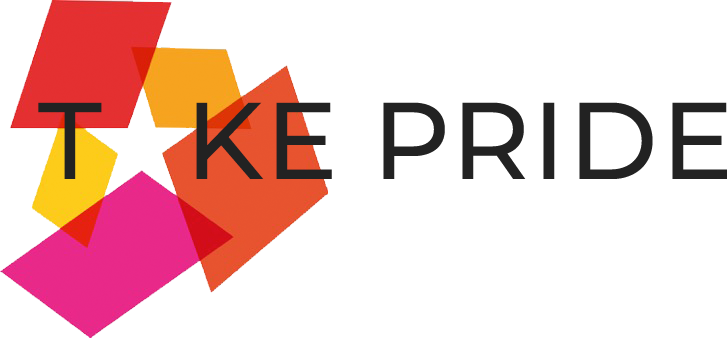 Last month, I had the pleasure of taking part in a Brand Network People & Culture Briefing at the London Stock Exchange, co-hosted by The Centre for Brand Analysis (TCBA) and Investors in People. On the agenda were brand purpose, employer brand, employee value proposition (EVP), diversity and inclusion, and wellbeing. The event created a powerful forum for HR and branding people to share their perspectives on how these concepts come together to determine company culture and employee experience
Last month, I had the pleasure of taking part in a Brand Network People & Culture Briefing at the London Stock Exchange, co-hosted by The Centre for Brand Analysis (TCBA) and Investors in People. On the agenda were brand purpose, employer brand, employee value proposition (EVP), diversity and inclusion, and wellbeing. The event created a powerful forum for HR and branding people to share their perspectives on how these concepts come together to determine company culture and employee experience
One of the highlights of my work is that I get to meet some great people who care deeply about doing the right thing in business, and are busy creating purposeful companies with meaningful consumer and employee experiences. At this event, it was impressive to hear from such diverse organisations as Securitas, ExCeL London and Tony’s Chocolonely.
For those of you who haven’t seen the brightly-wrapped bars in the UK yet, Tony’s is the newest kid on the block in the chocolate market. It’s a Dutch, independent manufacturer, created with the purpose of eradicating child slavery from the chocolate supply chain. It’s already grabbed market leadership in the Netherlands and started distributing in the UK at the end of 2018. Read their story here.
Following on from the event, here’s my take on what makes a strong employer brand and the benefit it brings to organisations and people.
The starting point for me has to be authenticity
Whatever it is that brands are communicating to the employment market needs to be absolutely grounded in reality. If an organisation has an over-arching brand purpose that it promotes to its external stakeholders, it needs to be a file rouge, running consistently through products, services and culture of the organisation. Authenticity is borne out in values, behaviours, policies, events, relationships and, of course, people. People are at the heart of an organisation’s outward expression and its internal culture.
Just as brand purpose drives consumer brand interface and experience, it will also drive the employee interface and experience. In my mind the expression of an employer brand should be a logical fit with how you express your consumer brand, not precisely the same but always congruous.
Underpinning the employer brand is the EVP, which is a two-way contract, articulating what is required from an employee by a company and what is offered in return. It is at the heart of the relationship that exists between employer and employee and will be a vital factor in building trust and engagement. It should present how a brand works in practice as far as employees are concerned; i.e. how their contribution helps achieve the brand purpose, what they need to do to fulfil it and how they will demonstrate the values, and be managed, rewarded, and recognised.
Next is the role of leadership
In my view, leaders are definitely vital to a cohesive brand performance and that means taking an active interest in defining and delivering the employee experience as well. We have all known leaders who are great at this, who lead by example, but there are others who simply don’t recognise their personal impact on employer brand value.
A common failing is to regard employer brand as a project. For sure, it is often evidenced by the things that HR “owns”, but in order for it to mean something, it has to be taken seriously outside a single department. Like culture, your employer brand belongs to everyone who is an influencer – the whole leadership team, managers, supervisors, team leads, and I believe the individual. And when new people join, they should be made aware of the responsibility they hold. These things tend to be implicit to the employee contract in start-ups and SMEs, but need to become more explicit as companies grow.
Why? The differences between a small tight team and a massive or even global business is that a) the core attributes can be diluted simply by numbers and variation so that things that were once held very dear to founders or boards can over time become less convincing; and b) in a multiple location, departments, outlets, the figurehead, if you like, of the brand is the local boss and the local manager. Leadership is simply distributed. The personal variations between how people behave on the scale of polite to rude; caring to uncaring; democratic to dictatorial; these are big disruptors to brand cohesion, often bigger than national or cultural variations. In fact these nationality-based cultural differences can often be accommodated within a cohesive corporate brand.
Several global brands have shown that they are able to reach a fairly common understanding of what strong core brand values mean. For example “do the right thing” or “do no harm” can be understood across multiple cultures and thousands of people. Consistency and transparency is the thing that counts in bigger, complex organisations and can be very powerful for the brand. Of course there is room for local interpretation and local nuance – particularly in terms of building relationships – but I would say there is a global consistency around for example, EY, McKinsey, GE, Coca Cola, Diageo and so on that most people would recognise and choose to buy in to.
Having said that, companies often recognise brand heroes but they also need to call out the villains. If people disrupt a culture internally (and their behaviour is doing harm) then they shouldn’t be tolerated. There are cases where people are simply allowed to get away with murder because they are clever or talented or have a relationship with a big customer or have a horrible ability to win arguments; they don’t really fit with your culture and eventually undermine it. The bravest leaders I have worked for wouldn’t accept exceptions. They recognised that if they looked at brand detractors and couldn’t understand how they had been recruited, they had a serious think about whether they should keep them. They knew that in order to protect the brand, sometimes they had to let people go.
This leads on to communications, where clarity is the key
Without a clear EVP, I don’t know how organisations expect to attract people to work for them; there is a very small brand elite who get it right and thousands of companies who are simply not on the map. Every year high thousands of graduates apply for low hundreds of jobs and waste time and energy on the unattainable; while the rest of the population clamber around in the dark stumbling over gems of jobs that nobody has ever heard of.
An EVP needs to be articulated in the vocabulary that employees and potential employees understand and relate to – it needs to be relevant to people inside and the outside of the organisation. This is not always the case. I have heard from many graduates entering into the job market, for example, that recruitment sites are full of concepts and statements that bear no relation to their knowledge and expectation of work. They are full of jargon rather than story and they fail to inform at the most basic level. Recruiters and headhunters also highlight cultural fit as a crunch-factor in successful appointments. They can be confident that candidates have the right skills, but the so-called “softer” aspects of personal and organisational “fit” are actually some of the hardest to predict.
Communications on brand purpose and values should be more personal. Some companies make this happen. They talk about the kind of company they want to be and the behaviours they wish to see; they challenge employees about the type of people they want to be, and make them think about what they want to be known for; they evaluate people not only on what they achieve, but also how they do it. And they stand out as a result.
The benefits of a clear brand purpose are immense
It guides and impacts the principles of the organisation, such as governance and speed of decision-making and the ability to innovate. In the external market, it drives higher consumer confidence and, of course, reputation; and in the employment arena, it’s much the same. There’s massive self-selection in the employer brand space and clarity on purpose and culture attracts and retains the right people; it also provides a certain energy and sense of direction. All of this drives pride in the brand – and hence performance. Purpose, Reputation, Integrity, Direction and Energy are the 5 factors identified in the PRIDE Model that have massive impact on employee engagement, performance and advocacy. For more on that, please click on the Model.
 Finally, I’d like to thank TCBA CEO, Stephen Cheliotis for inviting me take part in the event and to Sarah Hayes of Securitas, Joanna Abeyie and Dora Sigurjonsdottir from Investors in People, Lucy Merritt from ExCeL London and Ben Greensmith of Tony’s Chocolonely UK for sharing their stories.
Finally, I’d like to thank TCBA CEO, Stephen Cheliotis for inviting me take part in the event and to Sarah Hayes of Securitas, Joanna Abeyie and Dora Sigurjonsdottir from Investors in People, Lucy Merritt from ExCeL London and Ben Greensmith of Tony’s Chocolonely UK for sharing their stories.

